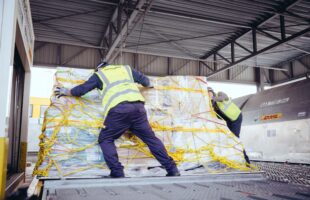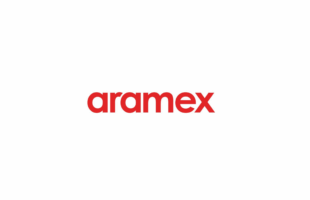

DHL Global Forwarding wants to shape the future of forwarding and right fully so. The forwarding division of the German parcel group has upgraded its online platform myDHLi to cater to air freight and make life easier for its customers.
After launching the digital logistics platform in May last year, the forwarding division had to upgrade its transport management system based on CargoWise. The system, developed by WiseTech and deployed at the end of Q1, will now be picking up where ocean freight left off, and DHL Global Forwarding chief Tim Scharwath expects the optimisation of air freight to be on the same level as that of ocean freight this year.
“Last year, we rolled out myDHLi and put more than 1,000 customers on the system. And if we say we put on customers, we have to keep in mind how the customer logistic setups are, we had to configure the app for the customer needs also,” Tim said.
“It’s much more than a track and trace system where anyone can look into the system and you have humongous number of customers,” he noted, adding that myDHLi now has 3,000 users and is expected to move up to the 9,000 mark by year-end.
Transparency
Moving freight has become more complex given new ways of remote working as the imbalance in supply and demand has resulted to above average rates. Shippers are now relying on multimodal options like rail not only to reduce costs but to anticipate supply chain disruptions, and Tim says this is where transparency becomes even more important.
For instance, Tim mentioned the Suez Canal incident back in March 2021: “When we had the situation in the Suez Canal, when it was blocked, the customers knew who had a container on the Evergreen ship and that that container was on the ship. The importance is to have this transparency, so customers, if there is a delay, understand how they can communicate with the peers or their key stakeholders and the organization or the customers so that there’s a clear understanding when this will move again, or where it’s stuck and why it stuck.”
Flexibility
As per the emergence of multimodal options, Tim says the strong demand has a lot to do with the disruption, particularly on the ocean freight side; as well as the available capacity and the rates which shippers have to pay. But he reckons this won’t be the case when such factors eventually neutralise.
“If you imagine a world again, where capacity is stronger and rates are going down, the multimodal aspects or the rail aspect would go down again, because for most of the customers and the amount of volume you can ship, ships are still the better option. But they are not cheap and they’re not reliable at the moment,” he noted.
Any form of normalcy isn’t going to happen soon and will take time, the forwarding chief comments, making it more important for users to have the flexibility to allocate their shipments to other modes to manage the risks.
Exploring new technologies
With the transport management system and myDHLi set up, it’s just a matter of time before emerging technologies are integrated into myDHLi and realise real results instead of just buzzwords.
“Well, I think the industry overall has always been a bit lame when it comes to new technology. Take things like Internet of Things, API, data lakes, blockchain technology, these are sometimes buzzwords used nicely by the industry. But if you go a bit into details, it’s very difficult to see actually where these things are being used,” Tim says.
As part of a 5-year strategy, DHL Group decided to build up centres of excellence that would work with one or more divisions to explore these technologies. For instance, Tim cites, one block chain solution allows different payment processes for fixed and negotiated rates to be easily be sorted out.
Tim said myDHLi will be enhanced by ideas coming out of these centres and would answer the entire discussion on how do get customer data to better manage the shipments. “Today, if you use an API, it’s much easier to do these things. We’ve hooked up with large pharma companies within less than 12 hours. They could send us their shipment data and we were able to use the data, which helps us then with quality, and the way we work with the documents is much higher,” he notes.
Data and cybersecurity
Talking about data privacy and cybersecurity, Tim claims that DHL is taking these seriously and has data protection officers in different countries, with different restrictions, to ensure compliance.
“On days like these, you are under attack from people who want to get into your systems. And if you have a brand name, like DHL, you’re probably more under attack… If we imagine forwarding logistics going more into digitalization, then we also have to make sure that we understand cybersecurity and data privacy very well,” he adds.
Keeping the personal touch
As the forwarding industry enters a new era of digitalisation, Tim strongly believes that the technologies and algorithms are only meant to support in the background and keeping that personal touch is still the way to move forward.
“In times, where things are a bit difficult, like now, it’s really important that we don’t lose the personal touch because we have to explain much more. At the end of the day, we will see that we as people want to communicate, and if you think about great ecommerce platforms, if something goes wrong, someone will call or there’s a chatbot who would give you information. And that kind of thinking we also have to get into forwarding.”









